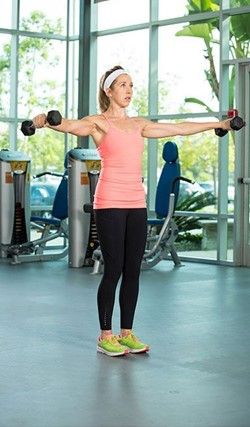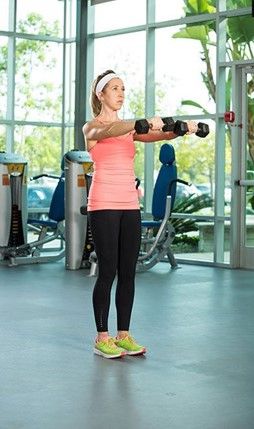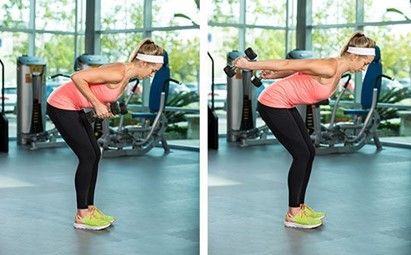Last Updated November 17, 2023 (originally published September 21, 2017)
If your clients are like most people, they are busier than ever, with little time to themselves. But here’s some good news you can share: They can target their arm muscles, while also giving their health and overall well-being a boost, in as little as 10 minutes. The key is to perform a super-efficient workout like AMRAP—as many rounds as possible.
The concept behind AMRAP workouts, and why they’re so effective, is that clients do as many rounds of a given set of exercises within a specific amount of time. This style of workout is perfect for days when they don’t have a lot of extra time, because it allows them to work their muscles to failure, and training to failure can be a useful way to build muscle.
There’s just one caveat: Training to fatigue can quickly lead to overtraining, increasing a person’s risk of burnout and injury. In other words, don’t have your clients train to fatigue every single day. Space out these types of workouts so that their body has a sufficient amount of time to rest and recover between sessions (usually 48 to 72 hours).
The training time for this AMRAP total-arm burnout, which you can share with your clients, is 10 minutes. Clients should complete 10 reps of each of the following exercises, with 30 seconds of rest between each round. The goal is to perform as many rounds of all six exercises as possible within that 10-minute timeframe.
Wide Push-ups
Primary muscles used: pectoralis (chest), anterior deltoid (shoulder and triceps)
Assume a plank position with your toes on the floor, feet shoulder-width apart and hands a little wider than the shoulders. Brace the core, activate the quad muscles and slowly lower the body down until the elbows are at a 90-degree angle. Push the entire body up, staying stiff as a board, to complete one rep. Don’t let the hips sag and avoid pushing the upper body up first.
Modification: Lower the knees to the ground rather than staying on the toes.
Triceps Dips
Primary muscles used: triceps, pectoralis
Sit on a bench and place the hands close to your sides, fingers facing forward. Position the feet in front of you, so they are resting flat on the floor, and scoot your hips off the edge. Slowly lower your body, making sure the elbows shoot straight back behind the body, not out to the sides, until your upper arm is parallel to the floor. Raise back up by using your arms and not your legs and squeeze your triceps at the top to complete one rep.
Modification: Keep the feet close to your body and knees bent at a 90-degree angle.
Lateral Boxes
Primary muscles used: trapezius, anterior and lateral deltoid
Grab a set of 2- or 5-pound dumbbells if you are a relatively new exerciser. You can increase weight once you learn the movement. Hold a dumbbell in each hand at your sides, palms facing in. Stand with the feet hip-width apart, drop the shoulders down and back, and raise the arms straight out to the side.
Once at shoulder height, keep the palms facing down and bring the hands toward one another to meet in the middle, in front of your body. Lower them down so the arms are resting against the front of your body. Raise them straight back up to shoulder height, back out to your sides and finally down to the starting spot to complete one rep.


Triceps Kickbacks
Primary muscles used: triceps
Grab a set of 5- or 8-pound dumbbells if this exercise is new to you. Increase the amount of weight once you learn the movement and build strength. Begin by hinging at the hips so that the chest is facing the floor and keep your back flat. Position the upper arms parallel to the floor and close to your torso, while bending your elbows. Slowly contract your triceps muscles until the elbows are fully extended. Your upper arms should remain stationary throughout the movement. Slowly lower the weight to the starting position to complete one rep.

Biceps Curl and Shoulder Press
Primary muscles used: biceps, deltoids
Grab a set of 5- or 10-pound dumbbells if this exercise is new to you (again, increase the weight as you become more comfortable with the exercise). Start with a dumbbell in each hand, arms hanging at your sides and palms facing your body. Keep the elbows close to your body and use the biceps to bring the dumbbells to shoulder height.
Swing your arms out so the palms are now facing forward, with the elbows at a 90-degree angle and the dumbbells next to your ears. Raise both hands straight up above your head, and then lower back down to starting position to complete one rep.




 by
by 





 by
by